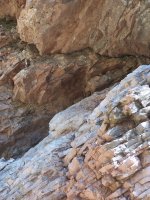lpetrich
Contributor
Dinosaurs have long caught the public imagination, much more than most other of the Earth's past biota. Some of them were just plain big, and many of them look rather weird by the standards of present-day biota, much more than most pre-Holocene Cenozoic megafauna. The mammoth, for instance, was a furry elephant, but sauropods were not only elephant-sized or bigger, they looked weird: an elephant-like body with a long neck, a small head, and a long tail.
Their demise has also caught the public imagination, with "dinosaur" suggesting something ponderous but obsolete. But were dinosaurs on the way out in the late Cretaceous? Or were they doing very well before the disaster that killed them?
"Dinosaur" here is "non-avian dinosaur", because it is now well-established that birds are descended from dinosaurs. Not from sauropods, of course, but from some smaller two-legged carnivores and omnivores: theropods. Tyrannosaurs are the best-known theropods, but some were much smaller.
Dinosaur diversification rates were not in decline prior to the K-Pg boundary | Royal Society Open Science
Their demise has also caught the public imagination, with "dinosaur" suggesting something ponderous but obsolete. But were dinosaurs on the way out in the late Cretaceous? Or were they doing very well before the disaster that killed them?
"Dinosaur" here is "non-avian dinosaur", because it is now well-established that birds are descended from dinosaurs. Not from sauropods, of course, but from some smaller two-legged carnivores and omnivores: theropods. Tyrannosaurs are the best-known theropods, but some were much smaller.
Dinosaur diversification rates were not in decline prior to the K-Pg boundary | Royal Society Open Science
In short, new dinosaur species were emerging from earlier ones all the way to their end in the Cretaceous-Paleogene (K-Pg) disaster.Determining the tempo and mode of non-avian dinosaur extinction is one of the most contentious issues in palaeobiology. Extensive disagreements remain over whether their extinction was catastrophic and geologically instantaneous or the culmination of long-term evolutionary trends. These conflicts have arisen due to numerous hierarchical sampling biases in the fossil record and differences in analytical methodology, with some studies identifying long-term declines in dinosaur richness prior to the Cretaceous–Palaeogene (K-Pg) boundary and others proposing continued diversification. Here, we use Bayesian phylogenetic generalized linear mixed models to assess the fit of 12 dinosaur phylogenies to three speciation models (null, slowdown to asymptote, downturn). We do not find strong support for the downturn model in our analyses, which suggests that dinosaur speciation rates were not in terminal decline prior to the K-Pg boundary and that the clade was still capable of generating new taxa. Nevertheless, we advocate caution in interpreting the results of such models, as they may not accurately reflect the complexities of the underlying data. Indeed, current phylogenetic methods may not provide the best test for hypotheses of dinosaur extinction; the collection of more dinosaur occurrence data will be essential to test these ideas further.

